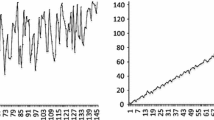Abstract
Educationalists are well able to find fault with rankings on numerous grounds and may reject them outright. However, given that they are here to stay, we could also try to improve them wherever possible. All currently published university rankings combine various measures to produce an overall score using an additive approach. The individual measures are first normalized to make the figures ‘comparable’ before they are combined. Various normalization procedures exist but, unfortunately, they lead to different results when applied to the same data: hence the compiler’s choice of normalization actually affects the order in which universities are ranked. Other difficulties associated with the additive approach include differing treatments of the student to staff ratio, and unexpected rank reversals associated with the removal or inclusion of institutions. We show that a multiplicative approach to aggregation overcomes all of these difficulties. It also provides a transparent interpretation for the weights. The proposed approach is very general and can be applied to many other types of ranking problem.




Similar content being viewed by others
References
Attwood, R. (2009). Redrawing ranking rules for clarity, reliability and sense. Times Higher Education, December 10, 2009.
Baty, P. (2009). New era for the world rankings. Times Higher Education, November 5, 2009.
Centre for Higher Education Research and Information (CHERI), Open University, and Hobsons Research. (2008). Counting what is measured or measuring what counts? League tables and their impact on higher education institutions in England. Report to HEFCE.
Filinov, N. B., & Ruchkina, S. (2002). Ranking of higher education institutions in Russia—Some methodological problems. Higher Education in Europe, 27(4), 407–421.
Goldstein, H., & Spiegelhalter, D. J. (1996). League tables and their limitations: Statistical issues in comparisons of institutional performance (with discussion). Journal of Royal Statistical Society A, 159(3), 385–443.
Holder, R. D. (1998). The good university guide and rank reversal. Journal of Operational Research Soc, 49(9), 1019–1020.
Ince, M. (2007a). Fine tuning reveals distinctions. Times Higher Education Supplement, 9th November supplement.
Ince, M. (2007b). Ideas without borders as excellence goes global. Times Higher Education Supplement, 9th November supplement.
Kingston, B. (2007). The Complete University Guide 2008.
Times Higher Education. (2008). Strong measures. Times Higher Education, October 9th, supplement.
Tofallis, C. (2008). Selecting the best statistical distribution. Computers and Industrial Engineering, 54, 690–694.
United Nations Development Programme. (2010). Human Development Report 2010. The Real Wealth of Nations: Pathways to human development.
Yorke, M., & Longden,B. (2005). Significant figures: Performance indicators and league tables. SCOP (Standing Conference of Principals). Available from: http://www.scop.ac.uk/UploadFolder/SCOPsigfigfinalprint2.pdf.
Author information
Authors and Affiliations
Corresponding author
Appendix
Rights and permissions
About this article
Cite this article
Tofallis, C. A different approach to university rankings. High Educ 63, 1–18 (2012). https://doi.org/10.1007/s10734-011-9417-z
Published:
Issue Date:
DOI: https://doi.org/10.1007/s10734-011-9417-z




